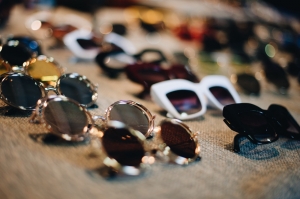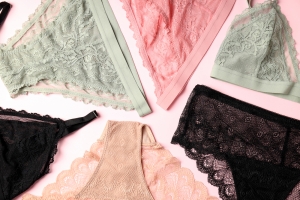When embarking on a journey to create your own line of swimwear, one of the most crucial steps is selecting the right custom made swimwear manufacturers. The quality of your swimwear, the efficiency of production, and ultimately the success of your brand depend significantly on the manufacturer you choose. To ensure you make an informed decision, it's essential to ask the right questions before starting your project. This article will guide you through the key inquiries to make, helping you establish a solid foundation for your swimwear line.
Understanding Your Needs
Before diving into the specifics of what to ask custom made swimwear manufacturers, it's important to clarify your own needs and expectations. Consider the following aspects:
- Target Market: Who are you designing for? Understanding your audience will help you communicate your vision to the manufacturer. Are you targeting competitive swimmers, beachgoers, or fashion-forward individuals? Each segment has different needs and preferences.
- Design Specifications: What styles, colors, and materials do you envision for your swimwear line? Having a clear design concept will facilitate better discussions with potential manufacturers. Consider whether you want one-piece suits, bikinis, or swim trunks, and think about the patterns and colors that will appeal to your target market.
- Budget: What is your budget for production? Knowing your financial limits will help you narrow down your options. Be realistic about your budget, considering not just production costs but also marketing, shipping, and other expenses.
Key Questions to Ask Custom Made Swimwear Manufacturers
1. What is Your Minimum Order Quantity (MOQ)?
- Understanding the MOQ is crucial as it affects your initial investment. Some manufacturers may require a high MOQ, which could be a barrier for new brands. Ask if they offer flexibility in order sizes, especially for first-time clients. This can help you manage your cash flow effectively.
2. What Types of Fabrics Do You Offer?
- Swimwear requires specific materials that are durable, stretchy, and resistant to chlorine and saltwater. Inquire about the types of fabrics available, their sourcing, and whether they can provide samples for testing. Fabrics like nylon, polyester, and spandex blends are popular choices for swimwear due to their elasticity and comfort.
3. Can You Provide Samples of Previous Work?
- Requesting samples allows you to assess the quality of the manufacturer's work. Look for craftsmanship, stitching quality, and overall finish. This step is vital to ensure that the manufacturer can meet your standards. A well-made sample can give you confidence in the manufacturer's capabilities.
4. What is Your Production Timeline?
- Understanding the production timeline is essential for planning your launch. Ask about the typical lead times for production and whether they can accommodate rush orders if necessary. A reliable manufacturer should provide a clear timeline that includes all stages of production.
5. What Quality Control Measures Do You Have in Place?
- Quality control is critical in the swimwear industry. Inquire about the processes the manufacturer uses to ensure that each piece meets quality standards. This could include inspections at various stages of production. A manufacturer with robust quality control measures can help prevent costly mistakes.
6. Do You Offer Customization Options?
- If you have specific design elements in mind, such as unique prints or cuts, ask if the manufacturer can accommodate these requests. Customization is a key selling point for many swimwear brands. Discuss the extent of customization available, including labels, tags, and packaging.
7. What Are Your Payment Terms?
- Understanding the payment structure is vital for budgeting. Ask about deposit requirements, payment methods, and any financing options available. Clear payment terms can help you manage your cash flow and avoid unexpected costs.
8. Can You Handle Shipping and Logistics?
- Inquire whether the manufacturer can assist with shipping and logistics. This can save you time and effort, especially if you are importing products from overseas. A manufacturer that offers logistics support can streamline the process and reduce potential delays.
9. What Is Your Experience with Custom Made Swimwear?
- Experience matters. Ask about the manufacturer's history in producing swimwear and whether they have worked with brands similar to yours. This can give you confidence in their capabilities. A manufacturer with a strong portfolio in swimwear can provide valuable insights and suggestions.
10. Can You Provide References from Other Clients?
- Requesting references allows you to hear firsthand experiences from other brands. This can provide insight into the manufacturer's reliability and quality of service. Positive testimonials can reassure you about your choice.
Additional Considerations
When engaging with custom made swimwear manufacturers, it's also important to consider the following:
- Sustainability Practices: If sustainability is a core value of your brand, inquire about the manufacturer's practices regarding eco-friendly materials and production methods. Many consumers today prefer brands that prioritize sustainability, so aligning with a manufacturer that shares these values can enhance your brand image.
- Intellectual Property Protection: Ensure that your designs and concepts are protected. Ask about the manufacturer's policies regarding intellectual property. A reputable manufacturer should have measures in place to protect your designs from being copied.
- Communication: Effective communication is key to a successful partnership. Assess how responsive and transparent the manufacturer is during your initial discussions. A manufacturer that communicates well can help prevent misunderstandings and ensure that your vision is realized.
The Importance of Research
Before you even start contacting custom made swimwear manufacturers, conducting thorough research is essential. This involves not only understanding the market trends but also familiarizing yourself with the manufacturing landscape.
- Market Trends: Stay updated on the latest trends in swimwear. For instance, the rise of sustainable swimwear has led many brands to seek manufacturers who can provide eco-friendly materials. Researching current trends can help you position your brand effectively.
- Competitor Analysis: Look at successful swimwear brands and analyze their offerings. What materials do they use? What styles are popular? Understanding your competition can provide valuable insights into what works in the market.
- Manufacturer Research: Compile a list of potential manufacturers. Look for reviews, testimonials, and case studies. Websites like Alibaba, ThomasNet, and Maker's Row can be great resources for finding reputable manufacturers.
Building a Relationship with Your Manufacturer
Once you've selected a few potential custom made swimwear manufacturers, the next step is to build a relationship with them. A strong partnership can lead to better communication, more flexibility, and ultimately a more successful product.
- Initial Meetings: Schedule meetings to discuss your project in detail. This is an opportunity to gauge their interest and enthusiasm for your brand. A manufacturer that is genuinely interested in your vision is more likely to go the extra mile.
- Regular Communication: Establish a communication plan. Regular updates and check-ins can help keep the project on track and address any issues that arise promptly.
- Feedback Loop: Create a feedback loop where both you and the manufacturer can share insights and suggestions. This collaborative approach can lead to better outcomes and a more refined product.
Understanding the Production Process
Having a basic understanding of the swimwear production process can help you communicate more effectively with your manufacturer. Here's a brief overview of the typical steps involved:
1. Design Development: This is where your ideas come to life. Work closely with your manufacturer to finalize designs, colors, and materials.
2. Pattern Making: Once the designs are approved, patterns are created. This step is crucial as it determines the fit and style of the swimwear.
3. Sample Production: A sample is produced for your approval. This is your chance to assess the quality and make any necessary adjustments.
4. Production: After the sample is approved, full-scale production begins. This involves cutting, sewing, and finishing the swimwear.
5. Quality Control: Throughout the production process, quality control checks are performed to ensure that the final products meet your specifications.
6. Shipping and Delivery: Once production is complete, the swimwear is packaged and shipped to you. Ensure that you have a clear understanding of the shipping process and timelines.
Marketing Your Swimwear Line
Once your swimwear is produced, the next step is marketing. Here are some strategies to consider:
- Brand Identity: Develop a strong brand identity that resonates with your target audience. This includes your logo, color scheme, and overall aesthetic.
- Social Media Marketing: Utilize platforms like Instagram and TikTok to showcase your swimwear. Engaging visuals and influencer partnerships can help increase brand awareness.
- E-commerce Setup: If you plan to sell online, ensure that your website is user-friendly and visually appealing. High-quality images and detailed product descriptions are essential.
- Pop-Up Shops: Consider hosting pop-up shops or participating in local markets to gain exposure and connect with customers directly.
Conclusion
Choosing the right custom made swimwear manufacturers is a critical step in launching your swimwear line. By asking the right questions and thoroughly vetting potential partners, you can ensure that your production process runs smoothly and that the final products meet your quality standards. Remember to consider your specific needs, budget, and design vision as you engage with manufacturers.
Frequently Asked Questions
1. What is the typical lead time for custom swimwear production?
- Lead times can vary, but typically range from 4 to 12 weeks depending on the complexity of the designs and the manufacturer's workload.
2. Can I order a small quantity of custom swimwear?
- Many manufacturers have a minimum order quantity, but some may offer flexibility for new brands. It's best to ask directly.
3. What types of fabrics are best for swimwear?
- Look for fabrics that are stretchy, durable, and resistant to chlorine and saltwater, such as nylon, polyester, and spandex blends.
4. How can I ensure the quality of my swimwear?
- Request samples, inquire about quality control processes, and consider visiting the manufacturer's facility if possible.
5. What should I do if I have a design idea?
- Communicate your design ideas clearly to the manufacturer and ask about their customization options to see if they can bring your vision to life.






